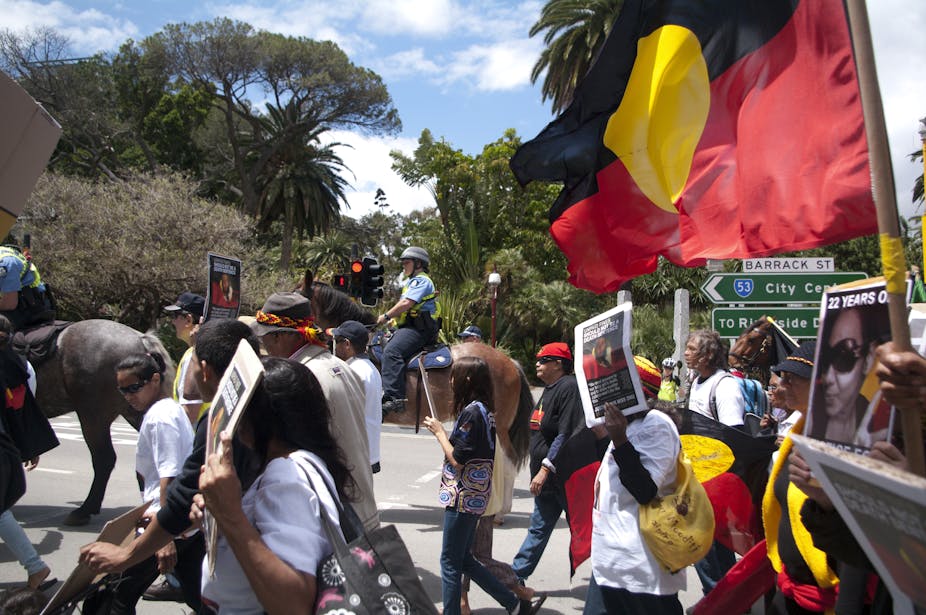For much of the 20th century, generations of Indigenous youth – known collectively as the Stolen Generations – were forcibly removed from their families by the force of law and placed in missions and state institutions. Today, Indigenous children are removed and placed in state institutions of another kind: juvenile detention centres.
Then-prime minister Kevin Rudd’s apology to members of the Stolen Generation in 2008 included a promise that it would never happen again. And yet, a new generation of Indigenous youth is being separated from their families and culture – this time by the force of the criminal law.
The issue is now so grave that it has surpassed that of a “criminal justice” issue. It has become a “social justice” issue – one that ought to be of concern to all Australians, especially politicians and policymakers.
The juvenile ‘justice’ system
About half (52%) of young people in juvenile detention centres are Indigenous. The rate of imprisonment among Indigenous youth is 348 per 100,000, compared with 14 non-Indigenous youth per 100,000, aged 10 to 17 years, in juvenile detention facilities across Australia.
In practical terms, this means that Indigenous young people are 25 times more likely to be detained than non-Indigenous young people. This is an increase from 24 times more likely in 2011.
The reasons for this are complex and have been documented extensively, most notably in the Royal Commission into Aboriginal Deaths in Custody in 1991.
Twenty-four years on from the royal commission, few of the 339 recommendations have been implemented into government policy. Indigenous incarceration rates have actually increased. Research indicates that the rate of over-representation of Indigenous young people has steadily increased since 1994.
Research reveals that Indigenous young people still receive more referrals to court and fewer police cautions when compared with non-Indigenous young people. They are more likely to have their matters to go to court, more likely to plead guilty and more likely to receive more serious and heavier penalties than non-Indigenous youth. They are significantly more likely to be held in detention on remand.
Yet an analysis of statistics only takes us so far. The death in custody in August 2014 of a young Yamatji woman for A$1000 in unpaid fines illustrates the human cost of playing “law and order” politics.
This tragic and entirely avoidable loss ought to serve as a stern reminder to government departments of the urgency in addressing the issue of Indigenous juvenile justice. Instead, Western Australian Attorney-General Michael Mischin publicly defended the state policy of “paying down” fines with jail time.
Alternatives to detention
The reasons for over-representation are complex. In light of this, there are no simple or quick fixes. That said, we know a great deal about what works.
A good start would be to implement and ensure policy consistency with the royal commission’s 339 recommendations.
We know that locally designed and community-based solutions are key. Many Aboriginal community members and elders are already involved in community initiatives targeted at keeping young people safe, often for little or no remuneration.
Good examples include:
night patrols, such as the Redfern Streetbeat, the Bourke Community Assistance Patrol, the Grafton Streetcruize, the Dubbo Community Patrol
mentoring programs, such as Tribal Warrior and the Australian Indigenous Mentoring Experience
cultural centres, such as Tirkandi Inaburra and the National Centre of Indigenous Excellence.
There is emerging evidence that justice reinvestment – taking money out of prisons and putting it back into the community – is effective in reducing youth crime levels. There is also a significant evidentiary basis to suggest that a “tough on crime” approach almost certainly does not work.
However, it does win elections.
You can read other articles in the Beyond Prison series here.

